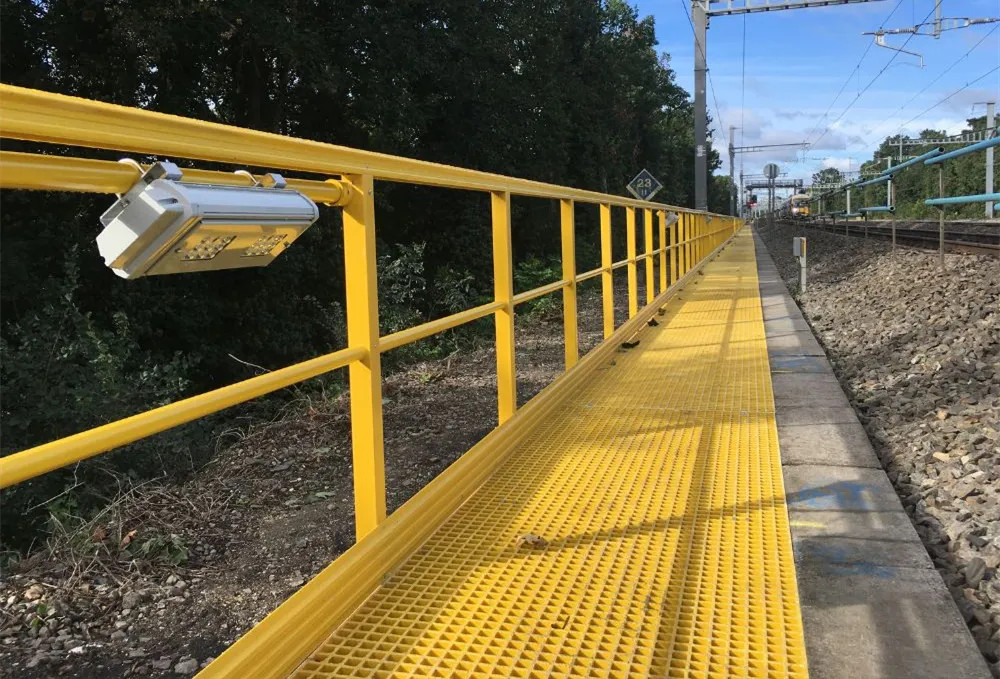loading...
- No. 9, Xingyuan South Street, Dongwaihuan Road, Zaoqiang County, Hengshui, Hebei, China
- admin@zjcomposites.com
- +86 15097380338
- Welcome to visit our website!
Choosing the Right FRP Grate Decking for Your Construction Needs
Understanding FRP Grate Decking Benefits and Applications
In recent years, the use of Fiber Reinforced Polymer (FRP) materials in construction has gained significant traction due to their superior properties and versatility. Among the various applications of FRP, one that stands out is FRP grate decking. This innovative decking solution has become increasingly popular in various industries because of its numerous advantages over traditional materials.
What is FRP Grate Decking?
FRP grate decking is constructed using a composite material that consists of a polymer matrix reinforced with fibers, typically glass or carbon. This combination results in a lightweight, strong, and corrosion-resistant product that can be used in a variety of environments. FRP decking is designed to provide a safe, durable, and reliable walking surface for both pedestrian and vehicular traffic, making it an ideal choice for applications where traditional materials may fail.
Advantages of FRP Grate Decking
1. Corrosion Resistance One of the most significant benefits of FRP grate decking is its exceptional resistance to corrosion. Unlike steel or aluminum, which can rust or corrode when exposed to harsh environmental conditions, FRP remains unaffected by moisture, chemicals, and saline environments. This characteristic makes it an ideal choice for waterfront structures, chemical plants, and other industrial settings.
2. Lightweight and Strong FRP materials are remarkably lightweight compared to traditional metals, which facilitates easier handling and installation. Despite its lightness, FRP grate decking boasts high strength and can bear heavy loads, making it suitable for a wide range of applications, from pedestrian walkways to heavy-duty industrial platforms.
3. Low Maintenance Maintenance can often be a significant concern with traditional decking materials. However, FRP grate decking requires minimal upkeep due to its inherent properties. It does not need paint or protective coatings and can be easily cleaned with soap and water, which reduces long-term maintenance costs.
4. Design Flexibility The manufacturing process of FRP allows for a wide range of customization options, including different colors, sizes, and shapes. This versatility enables architects and builders to create aesthetically pleasing designs that fit their specific project requirements while still benefiting from the functional advantages of FRP.
5. Safety Features Safety is always a top priority in any construction project. FRP grate decking can be designed with features such as anti-slip surfaces, which enhance safety for pedestrians and workers alike. This is particularly important in industrial environments where spills and moisture can create slippery conditions.
frp grate decking

Applications of FRP Grate Decking
FRP grate decking is used in various sectors due to its numerous advantages. Here are some notable applications
- Industrial Facilities Many factories and processing plants utilize FRP decking for walkways, catwalks, and platforms due to its robustness and low maintenance needs. Its corrosion resistance is particularly beneficial in environments where chemicals are present.
- Wastewater Treatment Plants The water treatment industry often relies on FRP decking for its resilience to harsh chemicals and its ability to withstand constant exposure to water. It helps to ensure safe access for maintenance personnel while minimizing risk of breakdown or replacement.
- Parks and Recreational Areas Many public parks use FRP decking for boardwalks and observation decks that overlook water bodies. The material’s resistance to UV rays and moisture ensures that it remains safe and visually appealing over time.
- Marine Applications FRP is widely adopted in marine environments for dock structures, walkways, and boat ramps. Its lightweight nature and corrosion resistance make it perfect for locations that are constantly exposed to water.
- Bridges and Overpasses As engineers look for alternative materials to traditional concrete and steel, FRP decking is being explored for use in bridges due to its high strength-to-weight ratio and long-term durability.
Conclusion
In conclusion, FRP grate decking represents a significant advancement in construction materials, offering durability, safety, and low maintenance combined with a lightweight design. Its unique properties make it suitable for a vast range of applications, particularly in challenging environments prone to corrosion and chemical exposure. As industries continue to evolve and seek innovative solutions, FRP decking is poised to play a vital role in the future of construction and infrastructure development. Whether it’s for industrial facilities, parks, or marine applications, FRP grate decking is undoubtedly a frontrunner in modern decking solutions.
-
The Benefits and Uses of Covered Grating SolutionsNewsMay.12,2025
-
SMC Panel Tanks: The Best Choice for Modern Water StorageNewsMay.12,2025
-
Sectional Water Tanks for Every NeedNewsMay.12,2025
-
FRP Profiles: A Strong Solution for Modern ApplicationsNewsMay.12,2025
-
FRP Pressure Tanks and VesselsNewsMay.12,2025
-
All You Need to Know About FRP Grating SolutionsNewsMay.12,2025
-
Why FRP Grating Panels are the Best Choice for Your Industrial NeedsNewsMay.09,2025
